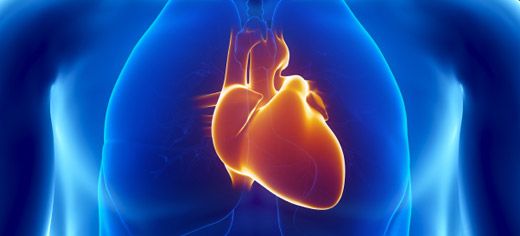
An international research team, led from the University of Leeds, has found that a common anti-angina drug could help protect the heart against carbon monoxide poisoning.
Animal studies have shown that the anti-angina drug ranolazine can significantly reduce the number of deaths from arrhythmias - irregular or abnormally paced heartbeats - that have been triggered by carbon monoxide.
The findings could have important implications for the development of a protective treatment for adults and children who have been exposed to toxic levels of the gas.
"When patients are admitted to hospital with carbon monoxide poisoning, the main problem doctors face is preventing damage to the body whilst the body slowly removes the chemical," said University of Leeds' Professor Chris Peers, who led the research. "We've shown that ranolazine can rapidly protect the heart and prevent the kind of cardiac events which threaten patients long after their exposure to the gas."
Carbon monoxide poisoning causes 1.6 million deaths worldwide every year. Many people who have been exposed to the gas develop cardiac arrhythmias, which if left untreated can lead to a fatal cardiac arrest.
Until now, however, the underlying biochemical mechanisms causing damage to the heart have not been fully understood, preventing the development of effective treatments.
Ranolazine, which is sold under the trade name Ranexa, was approved in 2006 in the US for the treatment of angina. The drug works by targeting a sodium channel in the heart - the same channel that can also induce irregular heartbeats.
Researchers at the University of Leeds examined the effect of ranolazine in single cardiac cells, to learn why carbon monoxide can trigger arrhythmias. They found that exposure to the gas caused a key membrane channel carrying sodium ions through the heart to stay open for longer. This in turn caused calcium to build up within cells, with the combined effect altering the heart's regular cycle.
Colleagues at the Université Montpellier 1 and Université de Avignon in France then trialled ranozaline on rats exposed to carbon monoxide, to test its protective effects. They found that the drug markedly reduced the chance of arrhythmia in the animals.
"Whilst the link between arrhythmias and carbon monoxide has been known for over 50 years, this is the first piece of research to explain the underlying process," said University of Leeds' Professor Derek Steele, who co-authored the research. "At the molecular level, we have shown that the mechanism underlying this adverse effect of carbon monoxide is a rise in the level of nitric oxide within cells, which in turn alters the function of the sodium channel."
The findings may also help those living in built-up areas or whose work involves daily exposure to lower levels of carbon monoxide, such as firefighters, the researchers believe. A recent and extensive epidemiological study of nine million people in the US1 showed a clear link between environmental carbon monoxide exposure and hospitalisation due to cardiovascular complaints. As ranolazine is a daily medication for angina, the researchers suggest it may be suitable to protect patients from the harmful effects of chronic exposure, though human clinical trials will be required to confirm this.
"The next step will be to replicate these findings in human trials. As the drug has been clinically approved, roll out of this treatment could begin soon after we have these results," said Professor Peers.
Dr Hélí¨ne Wilson, Research Advisor at the British Heart Foundation (BHF), which co-funded the study, said:
"This study is a good example of research being used to better understand the underlying causes of an abnormal heart rhythm and in this case it has uncovered the ability of an old drug to perform a new trick. Carbon monoxide poisoning is tragically common but hopefully these promising results can be replicated in people so that it saves lives in the future."
The research is funded by the BHF, Gilead Sciences, the Wellcome Trust and Fondation de France. The paper will be published in the American Journal of Respiratory and Critical Care Medicine. An advance copy can be found online here: http://ajrccm.atsjournals.org/content/early/2012/07/18/rccm.201204-0688OC.abstract
Further information
Professors Chris Peers and Derek Steele are available for interview. A copy of the paper is available for journalists on request.Contact: University of Leeds Communications & Press Office: Tel +44 (0)113 343 4031, email pressoffice@leeds.ac.uk
Notes to Editor- Bell, ML, Peng RD, Dominici F, Samet JM. Emergency hospital admissions for cardiovascular diseases and ambient levels of carbon monoxide: results for 126 United States urban counties, 1999"2005. Circulation 2009; 120:949"955. http://circ.ahajournals.org/content/120/11/949.full
About the British Heart Foundation
The British Heart Foundation (BHF) is the nation's heart charity, dedicated to saving lives through pioneering research, patient care, campaigning for change and by providing vital information. But we urgently need help. We rely on donations of time and money to continue our life-saving work. Because together we can beat heart disease.
For more information visit www.bhf.org.uk/pressoffice
About the Wellcome Trust
http://www.wellcome.ac.uk/